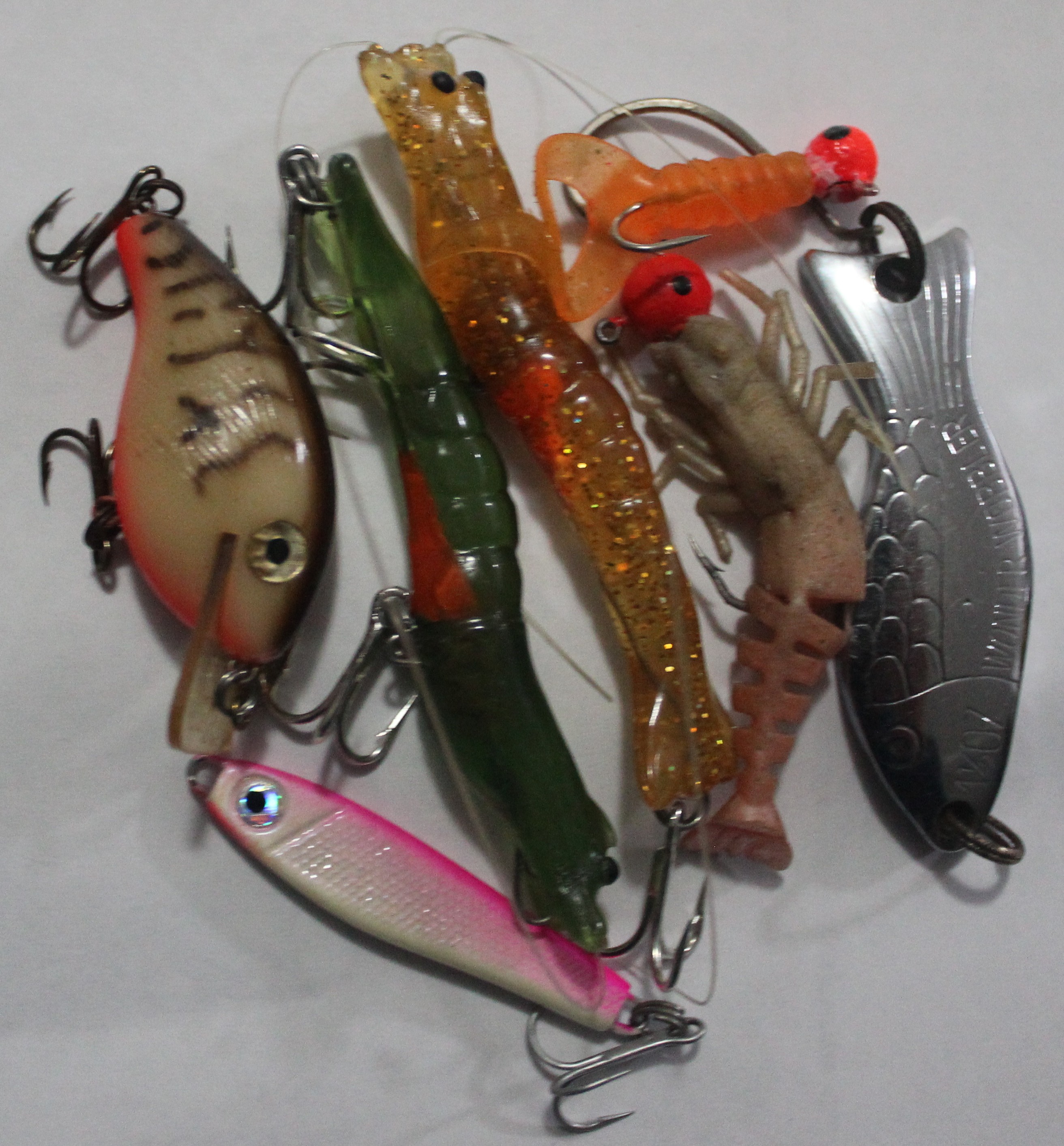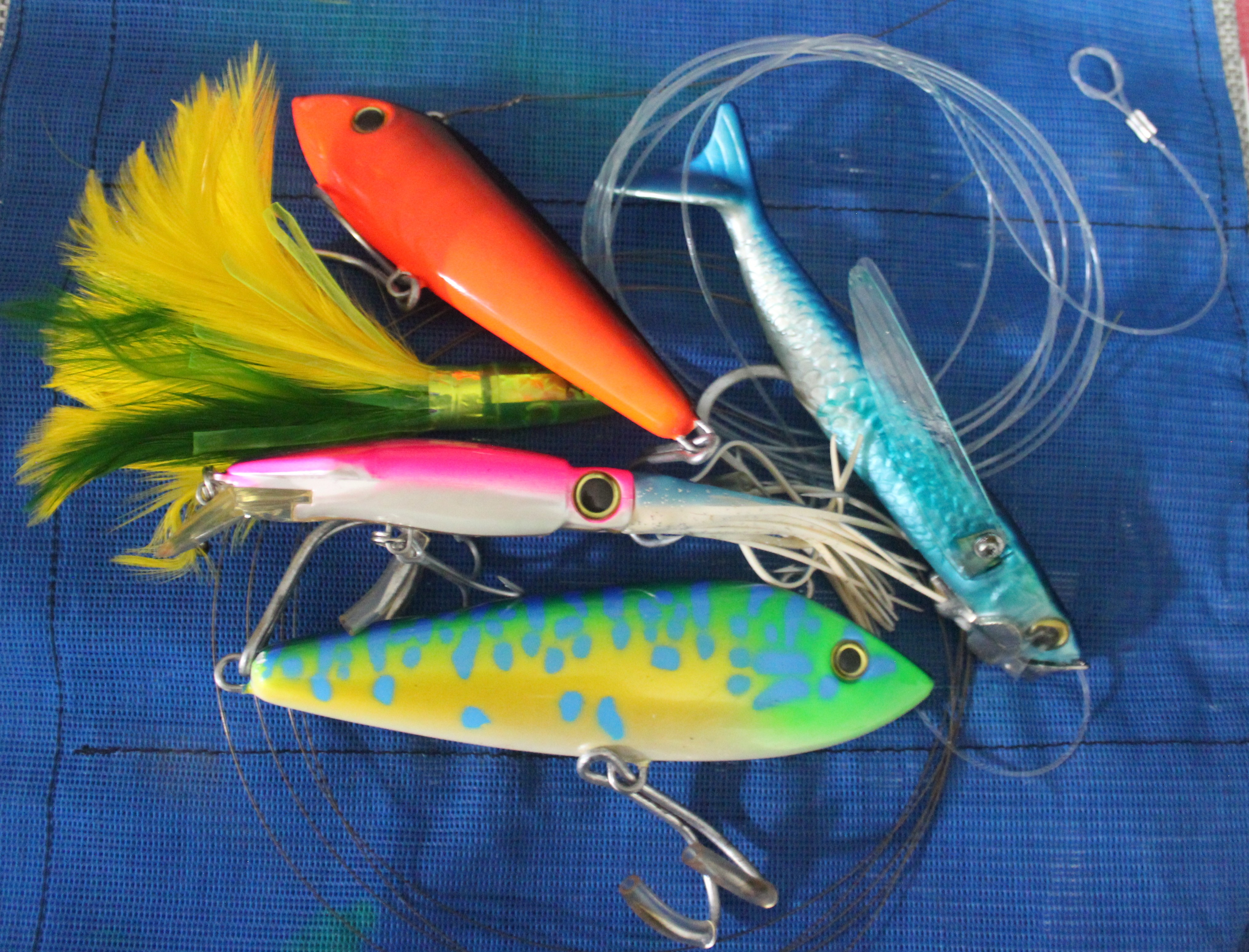Fishing from a sailboat
Fishing from a sailboat is a great way to supplement onboard provisions. Many people say that they do not catch many fish, but it is generally because they do not target the fish type or use the correct rigs. Simply throwing a line off the stern is generally not going to keep you that well fed.
The most common fish caught off the stern are generally termed pelagic fish such as Spanish mackerel, school and spotted mackerel, bonito and tuna. These are migratory ocean-going fish that surface feed on smaller bait fish. Many top anglers will tell you that fish bite better on the full moon, or the periods each side of it, so give it a try. This applies to ocean, reef and estuary fishing, even some clever digital watches will work out optimum fishing periods.
Fishing from a sailboat Fish
Species
Here is a quick guide. Invest in a fish identification chart and laminate it for quick reference. Mackerels generally have triangular, sharp teeth and rigid, crescent shaped tails. Barracuda have long needle looking teeth prominent on the top jaw and a soft tail similar to bream, tuna and bonito have a cigar shaped body with dark blue or green backs and silver bellies, Bonito generally have horizontal stripes. The image below is what are now called Vintage Game Fishing Lures and I bought a lot of them from Murray Brothers in Florida, still have many that have survived. Check out game lures at BassPro or your favorite fishing store.
Fishing from a sailboat - Reading the Sea
The ocean is often a barren place for fish, but it can simply be a question of fishing where the fish will be feeding. These areas include the following, so it pays to keep a close eye on your chart depth contours, sometimes a minor course deviation can pay dividends:
1. Reef systems. These are natural locations for fish to concentrate so keep an eye on your chart.
2. Sub-sea mountains, plateaus, and pinnacles. A rise in the seabed of only 50 feet can produce results on the surface 300 feet above particularly where currents rise or upswell off that feature and cause eddies on the surface.
3. Current lines. Fish are often seen foraging along these lines.
4. Temperature occlusions. This is generally on the continental shelf where deep and colder waters meet inshore warmer shelf waters. A series of tacks across the line is often very useful.
5. Weed rafts. The fish often travel with the raft using it as protection, and as a source of food. If you are ever unfortunate enough to end up in a life raft, try and secure yourself to a weed raft if you drift into one, as it has abundant life saving life.
6. Visual signs of fish. Flocks of seabirds wheeling and diving. Generally, they are feeding on surface schools. Signs of surface fish schools jumping as predators chase them. Often schools are chased by sharks, dolphins and other larger predatory fish. Some of the new radar units have bird detection features. This is mentioned in my new book the 4th Edition of the Marine Electrical and Electronics Bible. There are so many soft plastic lures available now and these are some of what I have carried and used aboard for several years.
Fishing from a sailboat - Trolling
Basics
Trolled lures are the general method of fishing for pelagic fish. There are a few basic recommendations to follow:
1. Braided lines are generally a lot better as it tends to kink a lot less. I personally fish with at least a 100lb (50kg) breaking strain line as well. Use stainless or black swivels to join the trace.
2. An essential item is a reel with a variable clutch. Most fish are lost (the ones that get away!) as they break the line on the initial run. Set the tension so that it pays out under medium pressure. When a fish strikes, just wind in hard, do not tighten up the clutch.
3. The best catches are always taken along reef edges and close to deep passages, around islands. Best boat speeds are around 3 to 6 knots, with around 150 feet (50m to 60m) of line paid out astern.
4. Gaff the fish before landing, as many are lost at this stage as hooks straighten out, lines break or traces are severed. Given my deck is somewhat high above the waterline, I have a long handle gaff hook and also a long handled landing net.
5. When you land the catch, dispatch the victim between the eyes with something heavy and blunt. Bleed the fish straight away. This is done by cutting either under or behind the gills. Bleed and put straight on ice or in the frig or fillet it and then refrigerate. Failure to do this will mean rapid softening and discoloration of the flesh, which is a waste.
6. There are many brands of lures and many lifelike lures and active ones that imitate fish movement, vibration and colors. Go along to your nearest fishing gear outlet and have a conversation as they really do know a lot.
7. These days I often use a small rod in a rod holder but I sometimes break out the braided line, connect that to a toilet rubber ring and fasten it at the stern. The ring absorbs the strike energy if I get lucky. Another name for a similar setup is the yo-yo reel. This uses 2m (6 feet) thick shock cord and a simple plastic hand reel. The reel should have around 50kg (100lb) monofilament with around 20 feet (6m) of 100lb (50kg) stainless steel leader. Some friends aid they tend to use multi coloured squid type lures. They also use 11/0 hooks and 2 ounce lead sinkers or weights and also swivels to link everything together. You will need a set of leather gloves for handling the line when you hook large fish.
Fishing from a sailboat - Fishing Lures
On board I still have a range of lures I bought from Murray Bros. in Florida some years back including flying fish and squid patterns. Lure technology has advanced a lot since then. The trend is soft plastic lures for both offshore and inshore. There are so many colors, shapes, sizes, configurations and patterns or styles to choose from that rival most natural baits. Of course, it depends somewhat on target species as well. They imitate various bait fish, shrimp, squid and so on with very real-life actions to attract attention. You have to plan for a variety of species and their environments and structures. Use lures that suit the target species. Choose lures that make vibrations when fishing estuaries and rivers where one is often anchored. These don’t work in clear waters where fish are working on sight. Trolling requires different solutions and crankbait lures or those that have paddle tails or screw tails all give realism. Matching the lure color to the water color is a common recommendation. Clear waters require natural, translucent or semi translucent colors. Lower visibility requires brighter lures such as yellow and orange. Murky water requires black and dark blues. For more on sailboat fishing click here.
Fishing from a sailboat - Estuarine Fishing
Fishing while on a mooring or at anchor presents different challenges and requires a different approach. Challenges include a constantly swinging boat with wind and tide so you have to use caution when leaving a line out overnight or unattended. Lines can often foul anchor chains and worse still the prop. I generally use a rod and water depths are generally quite shallow. This is where technique comes in as well as the use of a plethora of soft plastic lures, and each fish species behaves differently. Be aware that where you fish may be subject to prohibition as are bag limits and fish size limits. Check where you are on local rules and regulations. Fishing from a sailboat can be very rewarding.

